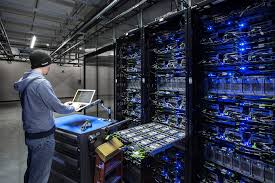Source – insidebigdata.com
Older data centers pose a variety of challenges for modern businesses. Technology that was once on the cutting edge may now struggle to keep up with the sheer volume of big data. Even when older tech can store data, it may take more than a few milliseconds to retrieve and transmit the necessary information. Fractions of a second can mean the difference between profit and loss in many tech and financial sectors. Some equipment may even be antiquated to the point of no longer working with modern programming languages or interfaces.
Before your company makes the leap to update your servers and other data-center equipment, make sure you understand the challenges ahead. Backing up data to the cloud and using continuous monitoring for added security may save time and resources and help avoid many of the potential pitfalls of data migration and private server maintenance.
New server equipment typically requires a hefty initial investment. While you may be able to salvage some cooling equipment, racks, cables and switches, the essential hardware of your new data center is likely to be the largest cost, outside labor, associated with the upgrade. Modern server equipment has a host of advantages over antiquated systems, including storage and security, but those benefits don’t come cheap.
Get quotes from multiple vendors and verify that the new servers have the ability to handle your information or even translate the data from its current server-side operating systems and applications to modern versions. While the hardware expense may seem obvious up front, the software and back-end management tools required can increase the initial outlay by a significant amount. Using vendor knowledge to your advantage may save on consulting costs, but always keep in mind that the vendor’s ultimate goal is to sell you goods and services.
Before committing to a large purchase, check with your company’s tax advisor for how the depreciation on the old server setup may have reduced the tax burden. Also, investigate if the new equipment may qualify for Section 179 tax deductions, which can help offset the expense. This type of IRS tax advantage can be a real boon for small businesses and larger corporations that only occasionally replace outdated hardware.
Unforeseen Duplication Expenses
There are other costs associated with moving big data between servers and locations that may not pop up in the initial estimate. Downtime for websites and tools that rely on the data center can add up to hundreds of thousands of dollars in lost sales and exposure. The outlay required for duplicating data on backup systems to prevent such downtime can also be prohibitive, especially as many backup options do not allow users to access stored information in real time.
When it comes to moving big data, time is both of the essence and one of the biggest resource drains associated with creating backups. Even with a dedicated fiber connection, it could take days or even weeks to back up large systems or migrate information between servers. This detracts from profitability for anyone relying on the stored data and can make end users very upset with hosting companies or similar businesses that rely on their uptime as a major selling point.
This downtime may provide a rare opportunity for company-wide training, or you may decide to provide employees with time off for the duration of the migration. Once big data is moved, it takes many man-hours to re-establish the connections that enabled smooth operation and restore service throughout the network, further increasing overall resource expenditure and making temporary furloughs a tempting option.
Additional Operating Costs
Even after the information is backed up or migrated to new servers, the new systems are in place in their cozy insulated rooms and service is restored across the network, the expense may not be done. Modern data centers are more energy efficient, have greater storage capacities and operate cooler than most aged counterparts. They still require constant monitoring, regular updates and periodic maintenance. You may even need to hire someone proficient with a new programming language or database setup following the change. Over time, these new systems will also no longer be able to keep up with hardware developments and the exponential growth of big data. When that happens, it’s time to get a new data center. And then you get to do it all over again.
Switching to software as a service (SaaS) and storing data with a cloud provider instead of keeping a private center operational may be far more appealing. SaaS and cloud-based storage providers can increase operating expenses in some cases, as you’re moving your information from purchased servers to rented space. This is not always a loss, however, as the ability to deploy storage at scale means such providers can often provide space at a lower cost than creating and maintaining a state-of-the-art data center. Cloud providers can also more easily remain on the cutting edge with advanced hardware and security due to the ability to share the overhead across multiple clients.
Where you work affects your health, and changes to data center infrastructure can impact the bottom line of your business with both initial outlay and ongoing costs. Moving data offsite can free up space for employees and help create a more comfortable overall working environment. Choose carefully when it comes time to upgrade and decide if the hamster wheel of chasing state-of-the-art private servers is worth the one-time and continual expenses or if you should move big data to the cloud. The benefits of local hosting are obvious, with everything under your direct control, but giving up some of that control could save your company time and frustration in the long run.
